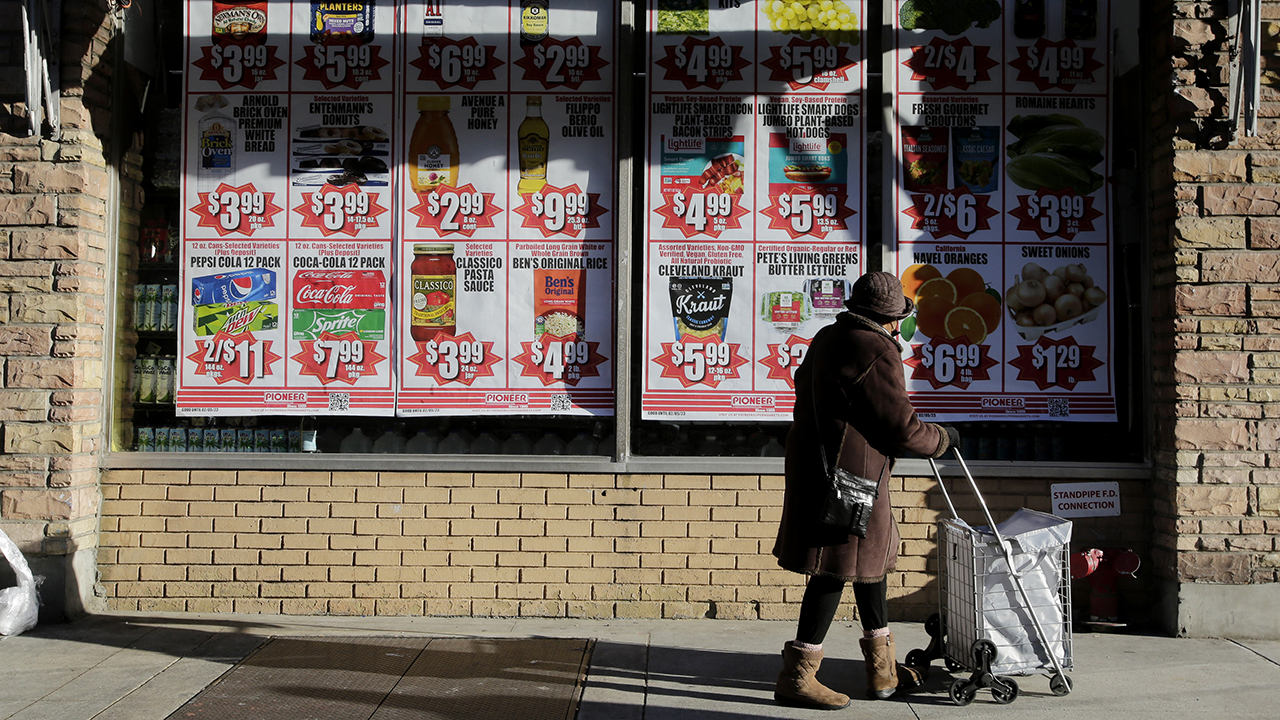Wholesale inflation surges 0.7% in January, more than expected as high prices persist
Producer price index projected to increase 0.4% in January
Supercore inflation isn't providing the economy any relief: Omair Sharif
Inflation Insights founder Omair Sharif and Kaltbaum Capital Management founder Gary Kaltbaum react to the hotter-than-expected January CPI report and what it means for future Fed rate hikes on 'The Claman Countdown.'
Inflation at the wholesale level rose more than expected in January, the latest sign that painfully high consumer prices could take some time to dissipate.
The Labor Department said Thursday that its producer price index, which measures inflation at the wholesale level before it reaches consumers, rose 0.7% in January from the previous month. It marked the steepest monthly increase since early summer. On an annual basis, prices are up 6%.
Those figures were both higher than the 5.4% headline figure and 0.4% monthly increase forecast by Refinitiv economists, a worrisome sign for the Federal Reserve as it seeks to cool price gains and tame consumer demand with the most aggressive interest rate hike campaign since the 1980s.
Excluding the more volatile measurements of food and energy, core inflation rose 0.5% for the month — the highest increase since May 2022 and nearly double the Wall Street estimate.
401(K) 'HARDSHIP' WITHDRAWALS SURGE TO RECORD HIGH AS INFLATION SQUEEZES AMERICANS

Prices are displayed in a grocery store in New York City on Feb. 1, 2023. (Leonardo Munoz/VIEWpress / Getty Images)
The data comes just a few days after the Labor Department reported that the consumer price index, which measures the prices paid directly by consumers, rose 0.5% in January, the most in three months. The annual inflation rate also came in at a hotter-than-expected 6.4%.
Both releases are considered to be important measurements of inflation, with the PPI believed to be a good leading indicator of inflationary pressures as costs work their way down to consumers. The different gauges point to inflation that is running well above the Fed's preferred 2% target, a troubling sign as the central bank has already raised rates eight straight times.
MORE AMERICANS GETTING A SECOND JOB AS HIGH INFLATION RAGES
Markets fell after the report, with futures tied to the Dow Jones Industrial Average down about 200 points.
"Both inflation readings this week point to the stickiness of inflation and that the fight isn’t over, especially when considering today’s PPI reading was the highest month-over-month increase since early summer," said Mike Loewengart, head of model portfolio construction at the Morgan Stanley Global Investment Office. "It shouldn’t be a surprise to see the market take a breather as hopes of a dovish Fed in the coming months fade."
The sharp increase in the monthly number stemmed from a big jump in final demand for goods, which climbed 1.2% in January, the biggest one-month increase since June. Nearly one-third of that increase can be traced to prices for gasoline, which rose 6.2% last month.
The final demand index for food, meanwhile, fell 1%, as the cost of eggs and other items dropped.





















